News
TOKYO LOVE KNIT ended successfully! Members of ‘Cho-Judai’ talked about potential and attractiveness of knit.
2024.02.20
In FY2023, TOKYO KNIT, collaborating with “‘Cho Judai’ -Ultra Teens“, was proceeding with activities to beam its attractiveness to all generations through Generation Z who will deliver the future. As a compilation of FY2023 activities, fashion show to unveil the clothes collaborated by TOKYO KNIT and ‘Cho Judai’ and artists with disabilities, “TOKYO LOVE KNIT“, was held on February 16, 2024 at TRUNK HOTEL CAT STREET MORI.
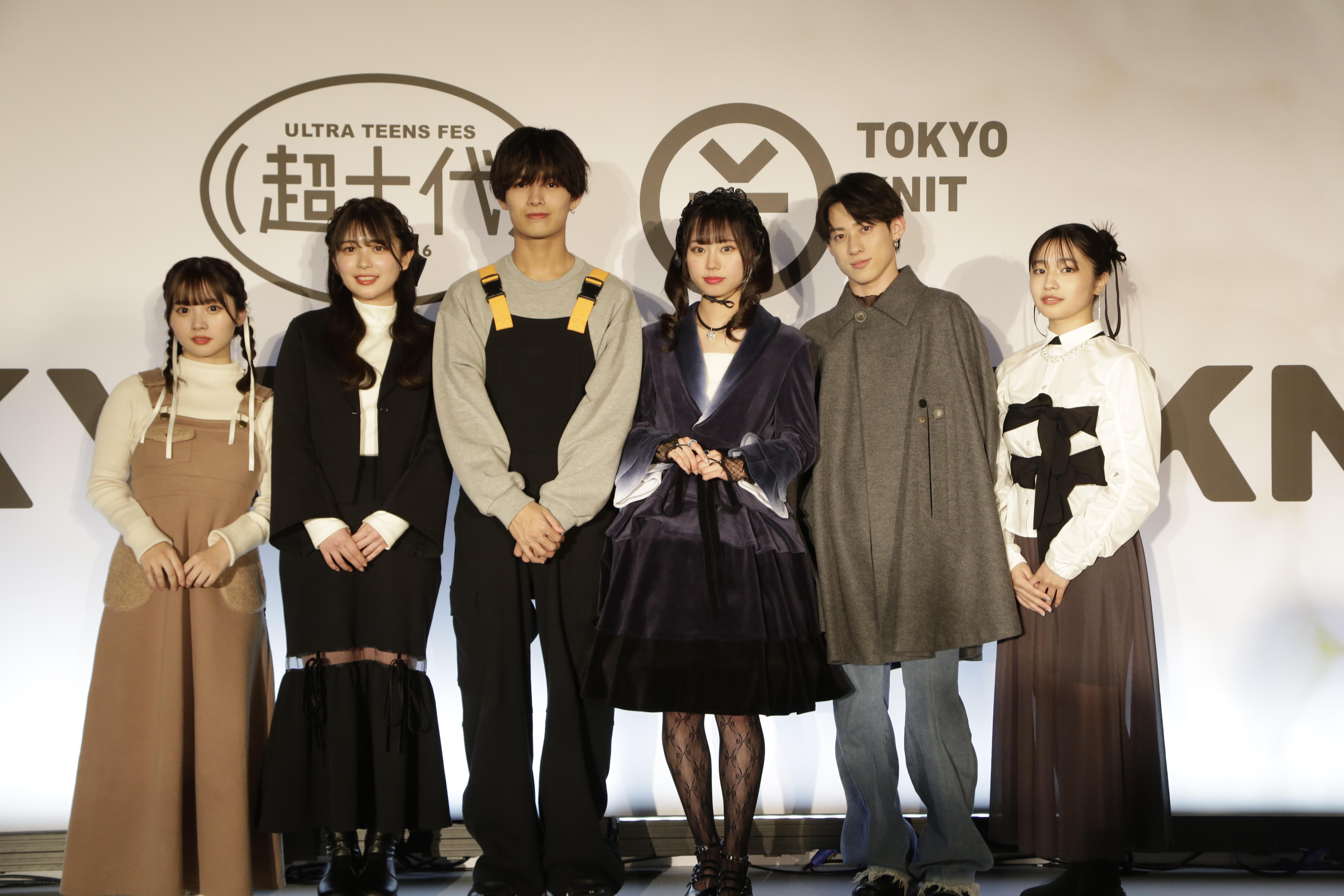
Had been focusing on appeal to BtoB until FY2022, especially to domestic and international apparel brands, in FY2023, TOKYO KNIT has been proceeding with the project in which Generation Z directly touch high-quality products of TOKYO KNIT and beam what they feel, as a program to appeal its attractiveness to Generation Z who will deliver the future. 4 TOKYO KNIT certificated companies collaborated with representative 6 influencers of ‘Cho Judai’, Yuka Uchiyama, Sota Uemura, Kyomi Sawada, Ayaka Honmo, Ruru Mikuma, and Ryuto. These 6 influencers wearing the clothes designed by themselves walked on the runway of fashion show. Regarding collaboration, said Ayaka Honmo “I used to think that knit was made of knitting wool. But I was very surprised to know that velour fabric and mesh fabric I used are also knit. There are so many kinds of them that it was very hard to choose. Meanwhile, it made me feel about unlimited potential of knit.”
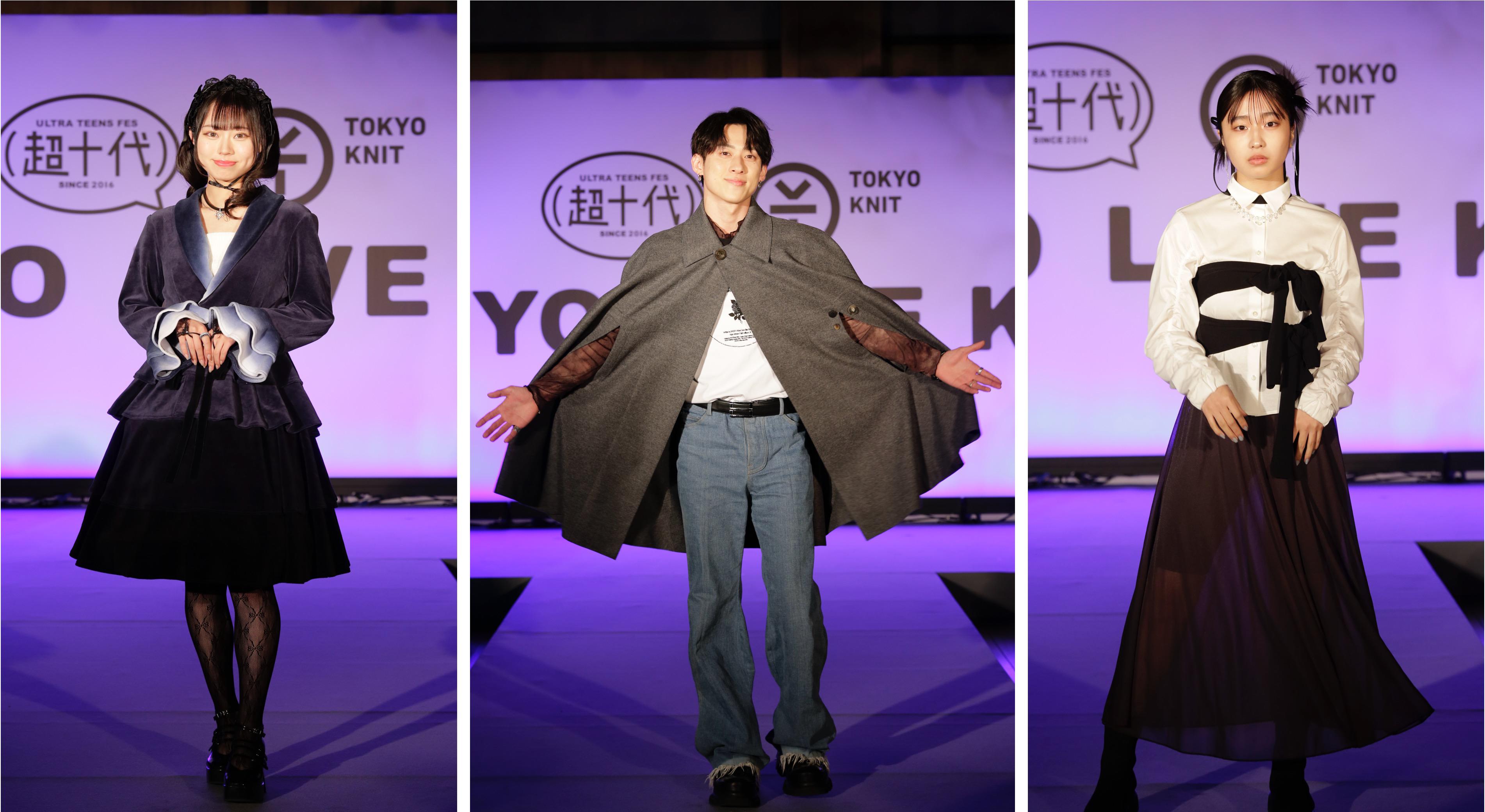
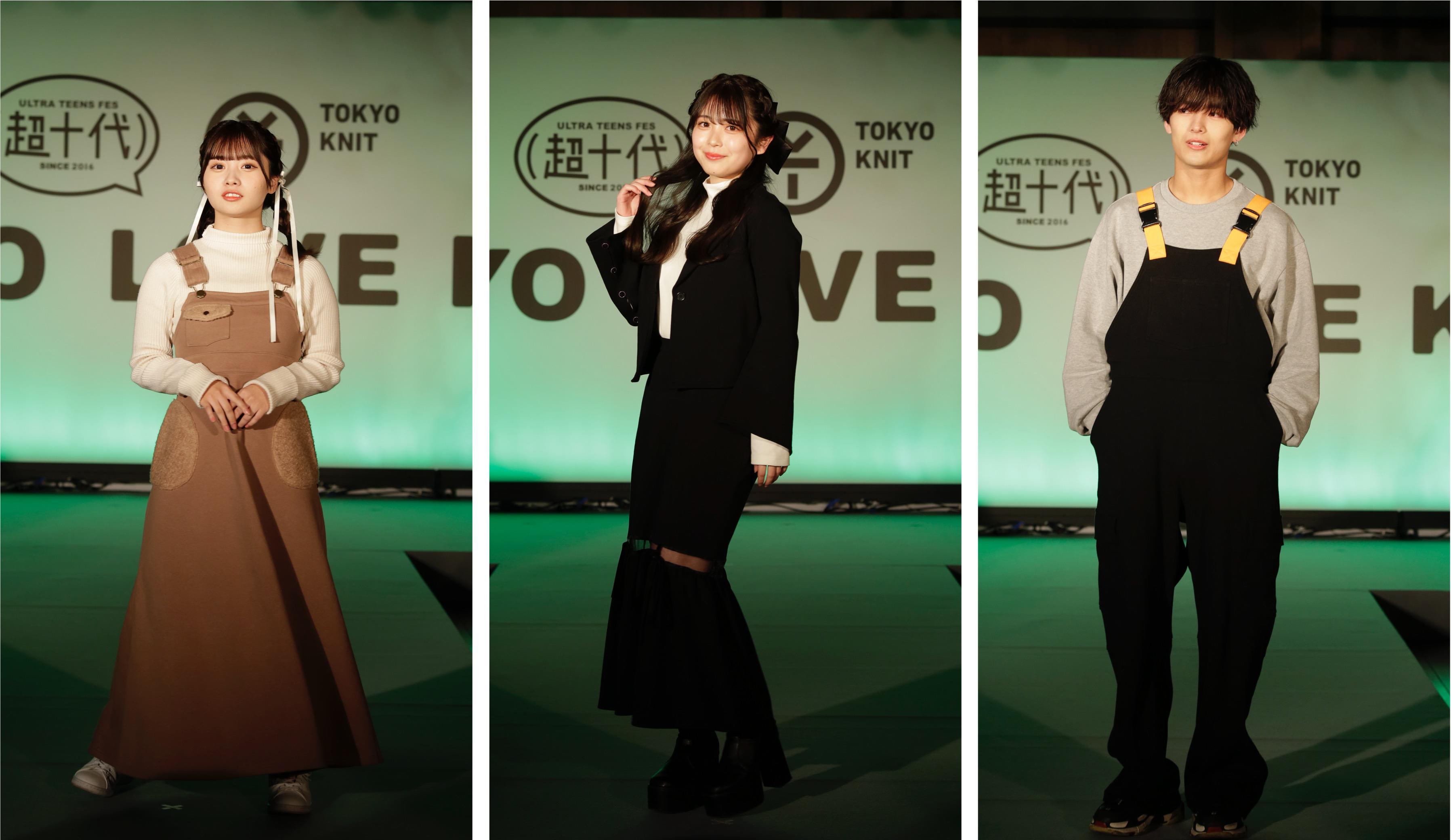
At the talk-show, 6 members of ‘Cho-Judai’, Nobutaka Fukasawa, a director of Maruwa Textile Industries Co.,Ltd., and Masatoshi Uchimi, an international researcher of Numajiri Textile Laboratory, talked below.
Q: Members of ‘Cho-Judai’, would you let us know themes or points to design the clothes for this collaboration?
Ruru Mikuma: My theme was to express myself. So, I designed overall in beige, my favorite color. Boa material is used to add an accent on it. With mini pocket, it becomes very cute!
Yuka Uchiiyama: Matureness was theme for me. I didn’t want to make it just a black coordinate. To make it particularly designed, I devised a couple of ways, for example, this jacket is usable in 2-way by unbuttoning sleeves and the see-through material is partially used for the skirt.
Sota Uemura: As I really wanted to make cute coordinate, I designed an overall and a long-sleeve T-shirt in black and grey, my favorite colors. To add an accent, I chose the belt of overall in orange. To make this overall easy to move and cute, I designed it big sized with big pocket!
Ayaka Honmo: I asked Maruwa Textile Industry to make the clothes, imaging the idol character of Anime I have been admiring for a long time. It was very hard to adjust balance by layering frills to make it look idol. I am very happy that I can feel as if I got closer to the existence of admiration.
Ryuto: I designed a cape like Superman wears. It is an important point that buttons are put on the slit part of this cape. As for a top made of see-through material underneath the cape, I challenged to use it even though this kind of material is generally considered for women.
Kyomi Sawada: I love the word, liberty. The designed flower symbolizing “liberty” will appear on the back side of shirt by removing ribbon. I expressed my wish, “will break free from the chains”, thorough this clothe.
Q: As for collaboration this time, would you tell us what was hard or interesting through the process of producing the clothes and what you became aware through the project.
Yuka Uchiyama: There were so many kinds of metallic parts, fabrics, and buttons that it was very hard to choose because I am indecisive.
Ayaka Honmo: I worried about choosing the material. I used to think that the knit is made of knitting wool. But velour and mesh fabrics I chose are also knit. There are so many kinds of them that it was very hard to choose. Meanwhile, it made me feel about unlimited potential of knit. Finally, I chose the fabric with texture I love most, and the final form became close to ideal.
Q: Do you want someone to wear the clothes you designed for this time?
Ayaka Honmo: As I reproduce the costume of my heroine, idol of Anime, I really want Otaku to wear it.
Ruru Mikuma: I want my fans to wear this clothe. My fans know that I love this type of color. This clothe can fit both of someone who already has worn in beige and someone who hasn’t ever challenged it. So, I want everyone to wear it.
Q: How did you think about the collaboration with members of ‘Cho-Judai’? Would you let us know what you expect to the Generation Z?
Nobutaka Fukasawa: Until the last fiscal year, we tried to appeal our technique and the greatness of knit, targeting at fashion industry. However, we wanted to collaborate with the Generation Z who is close to consumers and has great communication skills through social media. That’s why we asked them to collaborate with us. I wanted let young generations know how interesting making clothes is. So, I really hope that many young people come to want to work for fashion industry by knowing joy to create the final form based on their first idea.
Masatoshi Uchimi: As members of ‘Cho-Judai’ posted on social media very much, I was able to know their personality and preference in advance and we were able to work together well. Bringing it in line with each preference, I was able to proceed with this project, imagining what she or he likes it. They modestly questioned to us many times through the process of creating clothes. As they have great communication skills through social media, I really want them to continue posting online messages to tell “fashion is very fun!”.
■The clothes created by collaboration with artists with disabilities were unveiled.
6 TOKYO KNIT certificated companies reproduced artworks by artists with disabilities as clothes and 6 members of ‘Cho-Judai’ wearing them walked on the runway of the fashion show.
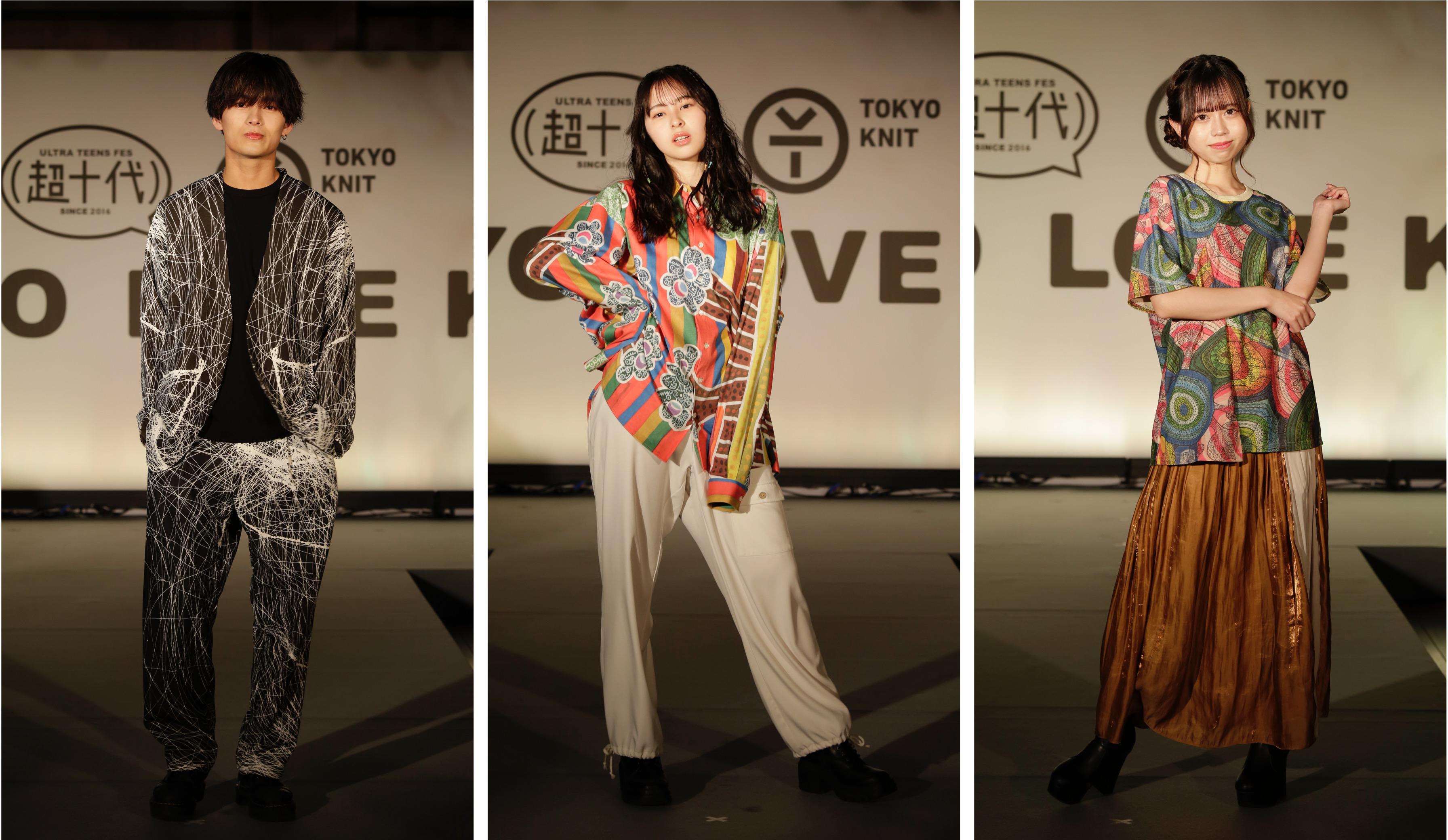
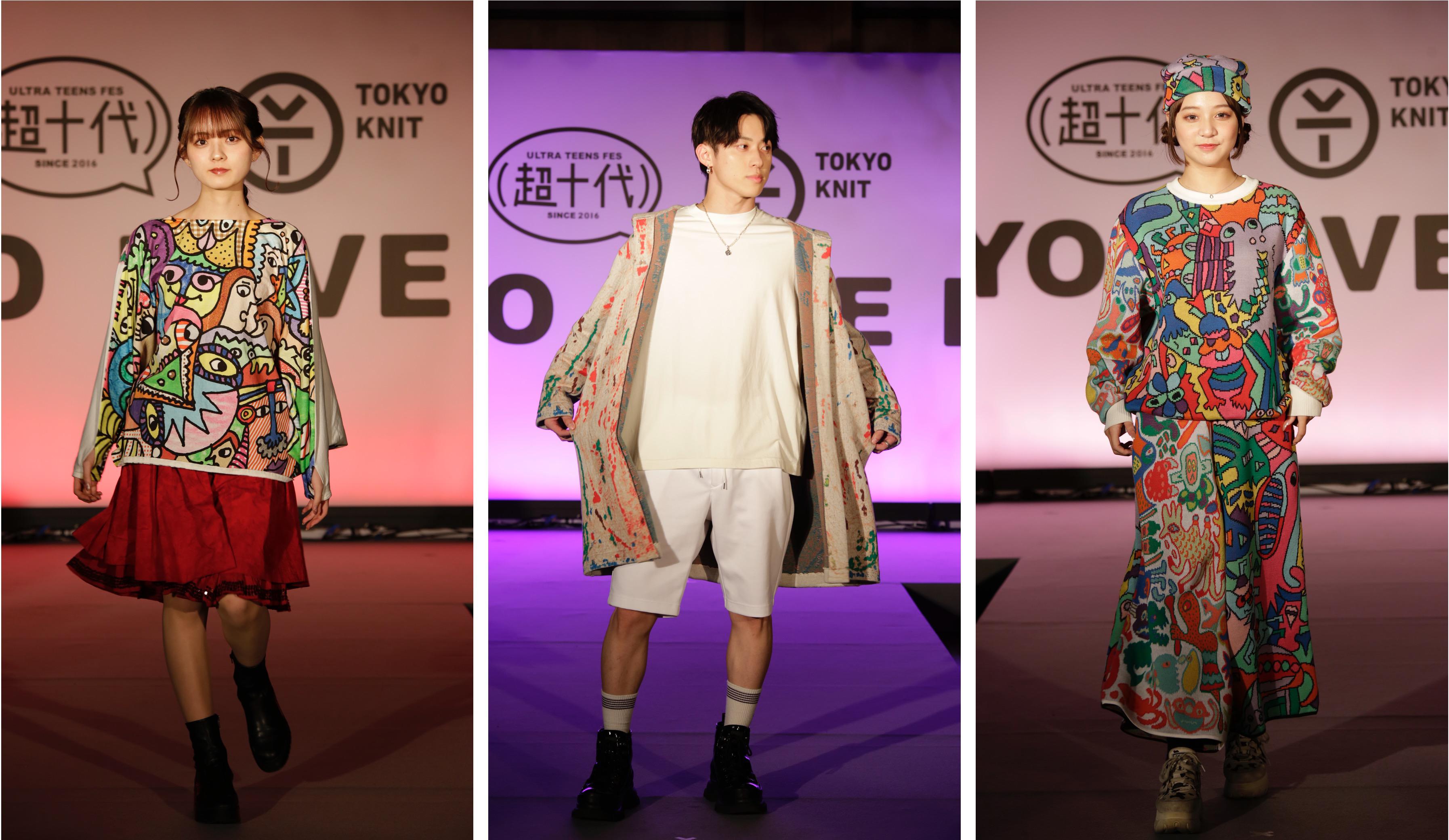
2 artists with disabilities, Mika Kmijo and Eiichi Shibata, who participated in the project, appeared on the stage of talk show. “Today, I am very happy to see that my two-dimensional artworks were reproduced as three-dimensional clothes. I have had a dream that these clothes would be sold someday.” said Mika Kamijo.
At TOKYO LOVE KNIT, as an experimental attempt, existing artworks were reproduced as the clothes. At the next stage, new brand will be launched to sell the package of the artwork newly drawn and the clothe as one-of-a kind item, to provide new value of artworks by artists with disabilities that has never been.
Detailed information about “Collaboration Project with artists with disabilities” is here.
Please see the detailed information about activities of TOKYO KNIT for FY2023 in the press release (PDF:0.8M).
TOKYO KNIT continues challenging.
Please look forward to future activities by TOKYO KNIT.
